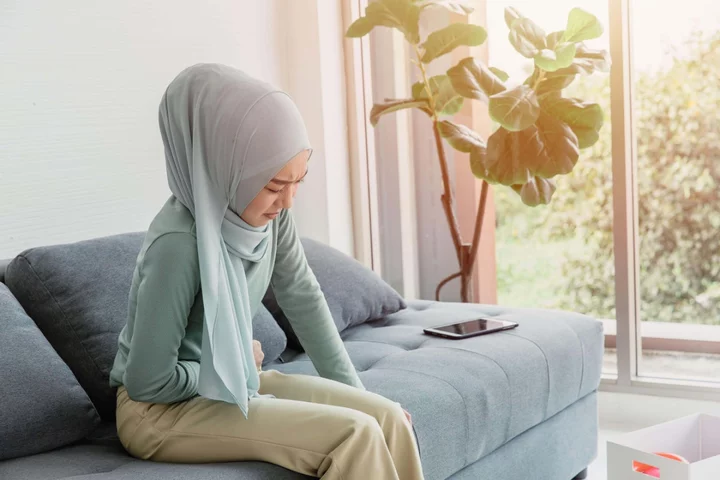
‘Millions of women and girls suffer severe pain’ during periods – research finds
Almost half of people who menstruate experience period pain that is ‘severe’ – and 51% feel their symptoms aren’t taken seriously by healthcare professionals, new research has found. The survey, commissioned by health charity Wellbeing of Women, asked 3,000 women and girls in the UK about their experience. A massive 86% of those surveyed said they have had mental health problems in relation to their period. Many said they had ‘debilitating pain’, bleeding for six weeks and some waited decades for a diagnosis of a health condition, in the survey of 16 to 40-year-olds across all regions, backgrounds and ethnicities. Women and girls have been “dismissed for far too long”, said Professor Dame Lesley Regan, chair of Wellbeing of Women. “It’s simply unacceptable that anyone is expected to suffer with period symptoms that disrupt their lives.” Painful, irregular and heavy periods can be symptomatic of serious gynaecological conditions. Signs of the chronic condition endometriosis – when the endometrial lining grows outside of the uterus – include debilitating period pain. Similarly, adenomyosis – a condition where the uterus lining starts growing into the muscle of the womb wall – is normally identifiable by painful periods and heavy bleeding. Painful periods may also be a sign of fibroids, non-cancerous growths that develop in or around the womb. Despite around two in three women developing at least one fibroid at some point in their life, according to the NHS, only 38% of those surveyed knew about the condition. Awareness for adenomyosis was even lower, at only 10%. The research found only 14% have tried medication to reduce heavy bleeding, despite treatments, like tranexamic acid which reduces blood loss significantly, being available. Caroline Nokes, Conservative MP and chair of the Women and Equalities Committee which is conducting an inquiry into reproductive and gynaecological health, said: “There is a terrible phrase, ‘Well, it’s just a period, why are you making a fuss about that? Can’t you just get on with it?’ “Yet many women and girls are experiencing horrendous period symptoms and gynaecological conditions. “These are impacting the health of women and girls, and preventing them from taking part in work, school, sport and everyday life. “Endometriosis alone affects 1.5 million women in the UK and costs the economy £8.2 billion – now is the time for change.” Wellbeing of Women have launched a new campaign called ‘Just A Period’ – aiming to address the normalisation of worrying period symptoms. NHS GP Dr Aziza Sesay said: “In my clinic, I see teenagers who are anaemic, who miss several days of school, and they don’t realise that this isn’t normal. They’ll literally use the words, ‘It’s just a period’. “It’s vital that we raise awareness and education on periods. We need to stop the narrative that heavy and painful periods are something we have to live with. “I want women and girls to have the knowledge to advocate for themselves, to push for more investigations, and to push for a diagnosis and treatment so that they don’t have to live with debilitating symptoms.” Clare Nasir, Channel 5 weather broadcaster and host of BBC Under the Weather broadcast, was diagnosed with fibroids and had an myomectomy – an operation to remove them. “With fibroids, there’s the physical pain but also the mental pain, I was struggling to conceive but looked about five months pregnant. People would write into the show asking why I hadn’t declared my pregnancy. It took a toll on my mental health. “When I eventually had my myomectomy, it was life changing. I’m passionate about raising awareness so that other women don’t feel alone and or suffer unnecessarily.” Read More Charity boss speaks out over ‘traumatic’ encounter with royal aide Ukraine war’s heaviest fight rages in east - follow live Cats given vegan diets ‘have better health outcomes’, study claims Groundbreaking migraine treatment offers ‘new hope’ for patients Taylor Swift and Shakira lead the charge in slit dresses at the 2023 MTV Video Music Awards
2023-09-14 13:25
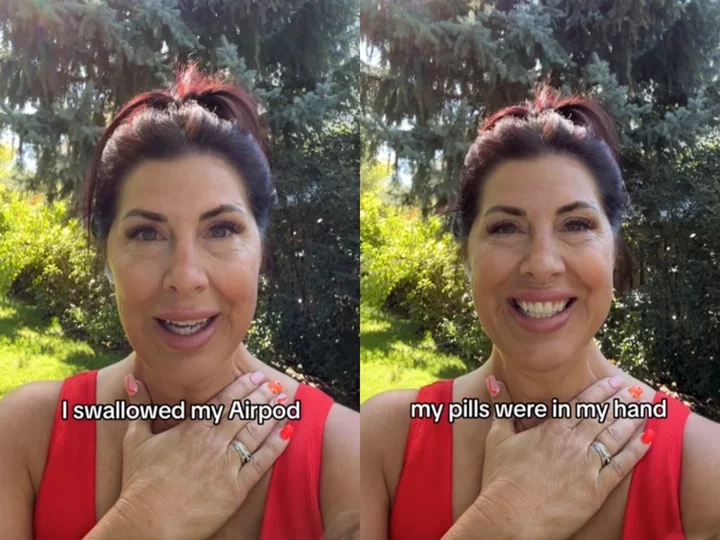
Woman says she accidentally swallowed her AirPod after mistaking it for a vitamin
A woman has revealed that she accidentally swallowed her AirPod while distractedly talking to a friend because she mistook it for a vitamin. Tanna Barker, a 52-year-old realtor from Utah, went viral on TikTok when she shared the “embarassing” story of how she ate one of her AirPods. Now, many viewers have sent her advice as she waits for the wireless headphone to naturally pass. “Okay, I’m gonna be very vulnerable right now,” she began the video, which has been viewed more than 2.7m times since it was posted on Saturday 9 September. “I had a situation happen this morning that I’m still dealing with.” Barker explained that she was on her morning walk when she ran into her friend, Kathleen, who she hasn’t seen in quite some time. “She was filling me in on her life and it’s been very, very busy and full and a lot went on, actually,” she said. However, Barker couldn’t hold back her laughter as she recounted: “Halfway through my walk, I decided to take my vitamins. So I put my vitamins in, took a drink and I was like: ‘Man, those are stuck.’” She then “guzzled” her water to wash the vitamin down, said goodbye to her friend, and kept going on her walk. But when she went to reach for one of her AirPods, she realised it was nowhere it be found. “My pills were in my hand. I swallowed my AirPod,” Barker said, laughing. Much like anyone would do in Barker’s situation, she quickly called friends and professionals in the medical field who “all suggested the same thing” - to let the AirPod pass naturally. “I don’t know if anyone has ever done that, it’s embarrassing, but I did it and we’ll see what happens. I’m gonna follow the advice of professionals,” she added. Despite swallowing her one AirPod, Barker pointed out that there’s still a “bonus” to the unfortunate situation: “I still have my right AirPod.” @tannasellsutah ?OH MY GOOOOOOOSH!!!! You have to watch this! So embarrassing!!! #istillcantbelieveit #whatinthelivingheck #thistooshallpass #whatthe #iamshook #getoutofmybelly ♬ original sound - IamNanaTanna She captioned her TikTok video with the hashtags: #istillcantbelieveit, #whatinthelivingheck, #thistooshallpass, #whatthe, #iamshook, and #getoutofmybelly. Barker’s viral video has since received thousands of comments from TikTok users, a majority of them mostly curious whether the AirPod was still working inside Barker’s body and if she can hear music from her stomach. “The first thing I’d do is play music and see if I can hear it from my stomach,” one person commented. “Play music really loud so you can track its progress,” another user joked. “I’d literally have a panic attack knowing an AirPod is in me,” said someone else. “Not knowing what will happen, possibly blowing up.” @tannasellsutah Part 2…take 2…#2 ♬ original sound - IamNanaTanna In a follow-up video, Barker revealed that it was actually her husband’s AirPod that she swallowed, but he’s maintained a positive outlook on the situation. She recently told her husband that she was going grocery shopping and he asked how long she’ll be out, before telling Barker: “Oh, never mind. I could track you.” Many Apple users are aware that wireless AirPods are able to be tracked on the iPhone’s Find My Devices feature. When one TikToker asked Barker if she’s tried locating the AirPod with the tracking device to see if it still worked, she revealed that the app signaled her AirPods were in her stomach. “We did ‘Find My’ AirPod yesterday and it worked! Today, I think the battery is dead,” Barker replied. Speaking to Insider, Barker explained that she was told by medical professionals to let it pass naturally, and that it shouldn’t cause any harm because the battery is encased in the AirPod. @tannasellsutah PTAS - Post Traumatic AirPod Stress #ptas #thistooshallpass #shareyourshine #findhumorinlife #iammworthy #airpodsareforears #whatinthelivingheck #getoutofmybelly ♬ original sound - IamNanaTanna “One of them asked if I had swallowed both [AirPods] and I said no. And he said: ‘Well, that’s good because it has the magnet in it and that could have caused an issue,’” she told the outlet. Another doctor suggested that she go to the emergency room if she runs a fever, or her “stomach gets hard” and she’s nauseous. “I just have to find humour in my life,” Barker told Insider. “And so that’s kind of a default, thank goodness.” The saga finally came to a close when Barker updated her followers on her recent bowel movements. “When I first posted my post, one of the hashtags was #ThisTooShallPass… and it has,” she said in a video posted on Monday. @tannasellsutah ?Take✌?with Tanna‼️? Wait for it… #thistooshallpass #take2withtanna #iammworthy #shareyourshine #findhumorinlife #airpodsareforears #whatinthelivingheck #ipood #yoursoulisbeautiful #selffull #youarebright ♬ original sound - IamNanaTanna Barker also patted herself on the back for maintaining a positive attitude about the AirPod debacle, and thanked her newfound fans for joining her on the ride. “Oh my goodness, it has been such an amazing experience and such a wild ride, and I am so grateful that I have been able to protect my mindset,” she continued. “When things like this happen in my life - and this has been the most extreme for sure - but I have had experiences in my life where I’ve been able to have my mindset protected, and that I’ve been able to look at it with positivity and lightness. So I hope that I can continue to do that for you guys.” The Independent has contacted Barker for comment. Read More Plane passenger calls out father for leaving his wife with children while he has ‘kid-free flight’ Single woman’s day in a life video met with vitriol after going viral Woman’s ‘terrifying’ NYC apartment tour shocks the internet Schoolboy almost dies from swallowing magnets for TikTok challenge Woman shares honest review of New York City apartment TikTok mom slammed after making 5-year-old son run in 104 degree heat
2023-09-14 02:51

‘It can be hard when your kids leave the nest,’ mother says as study finds parents want their children back
Two-thirds of parents whose children have left home would gladly have them back again. A study with 2,000 mums and dads whose children have left said they would like their children to live no further than 14 miles away from them on average. But 90 per cent were keen to support their child’s dream and let them have their own adventure. As a result, 53 per cent travelled with them for their moving-in day, and 15 per cent stayed in a hotel to ensure they were settled. For 14 per cent of those, this stay ended up being as long as a week to ensure their child was okay. The research was commissioned by Premier Inn, which has created a downloadable ‘Empty Resters’ guide in partnership with content creator and parent, Tracey Lea Sayer, aged 51, to help parents through this change. She said: “It can be hard when your kids leave the nest. “Driving them up to university for the first time, for example, is the last big thing parents get to do for them before they become an adult. ”Our tips cover lots of the issues parents will face when helping kids leave the nest. “From packing advice to making sure kids have essential life skills like how to use a washing machine or plan a food shop, it’s all here. “Helping to focus on practical matters can be really beneficial for parents who might feel overwhelmed with emotion – and it can also really help them feel useful to their kids.” The study also revealed 36 per cent proceeded to redecorate their child’s bedroom after they’d shipped out. But 28 per cent of these simply spruced up the room, making it more comfortable, for when they come back for the holidays. It also emerged kids are slightly more likely to move out and stay local than move a good distance away (57 per cent compared to 41 per cent). And 29 per cent of parents find their children come home weekly. Most kids moved away for university (32 per cent), but 29 per cent moved in with a partner and 10 per cent got their own place with friends. But while 65 per cent would be happy to have their kids move back in with them if needed, 45 per cent said their relationship with their child has improved since they left. However, kids shouldn’t expect a free ride – as 55 per cent of the parents polled, via OnePoll, would be expecting some cash in rent every month. And their child moving out has led to 28 per cent travelling more, 26 per cent having more disposable income and 23 per cent eating out more. ‘A new chapter in her life’ Tracey said her eldest daughter Franke left to go to University last year and said one thing that brought them closer was “preparing her for her university life,” which helped them “bond over the little things that signified a new chapter in her life.” Tracey added: “From the obligatory shopping trip for essential bits and bobs, to teaching her how to make the perfect scrambled eggs and navigate laundry instructions. “Buying essentials in advance made us both feel more prepared, it meant Frankie and I could spend some quality time together too. “Equipped with a checklist of essentials well in advance, the daunting moving-in date had arrived. “Having already familiarised myself with the layout of the city, the location of her accommodation and the proximity of nearby hotels for visits during term time, I found a certain sense of comfort when we arrived in her university city, which is a fair distance from home. “Learning these in advance put my mind to ease and made the moving process a lot smoother.” Here are some top tips from Tracey for parents who are finding it hard after their children moved away: 1. Spend quality time with your other kids: When Frankie left for university, I got to spend real quality time with my younger son. He is quieter and doesn’t need as much attention but now he has me all to himself. 2. Create a New Routine: Establish a new daily routine that fits with your new schedule. Don’t think you will have loads more free time though. The admin that comes with having a child at Uni is relentless. Your ‘To do’ list won’t get any shorter. Student housing, finance and travel all need organising. 3. Focus on Self-Care: Prioritise you for once. Your physical and emotional well-being is important. Try to exercise, eat well and de-stress. 4. Connect with Other Parents: Sharing your experiences can be hugely comforting. I chat to the ladies at my exercise class who are all going through the same thing. We share notes, get it all off our chests and have a right good laugh about all the things the kids are getting up to. 5. Embrace the three Stages: Grief, relief and joy. Of course, you are going to be sad and grieve when your child leaves home, but you will get used to it and weirdly quite quickly. There is a sense of relief once they have settled in and made new friends. It took about three months for it to not feel strange just coming home to the boys Read More Schoolgirls struggle to access basic period protection, research suggests Cost of living means parents have less time to play with children, according to poll When is Freshers’ Week 2023 and how can I make the most of it? Meghan Markle gives children a shoutout as she joins Prince Harry at Invictus Games How many children does Elon Musk have? Single woman’s day in a life video is met with vitriol after going viral
2023-09-13 22:49

Sitting this many hours a day ‘rapidly increases’ dementia risk, study warns
Adults who spend a large part of their day engaging in sedentary behaviors are more prone to dementia, a new study finds. The research, published on Monday in the journal JAMA, found that people aged 60 and older who spend over 10 hours a day engaging in behaviors like sitting while watching TV or driving could be at increased risk of developing dementia. Scientists, including those from the University of Southern California say, the findings are concerning since Americans on average are sedentary for about 9.5 hours each day. In the study, researchers assessed the data from about 50,000 adults over the age of 60 who had wrist-worn accelerometers to measure their movement for 24 hours per day for a week. The individuals did not have a diagnosis of dementia at the start of the study, scientists noted. They then used a machine-learning algorithm to analyse the dataset of accelerometer readings and classify behaviors based on different intensities of physical activity. Using the AI system, scientists could differentiate between different types of activity and sleeping – providing an objective measure of the time each person spent engaging in different types of sedentary behaviors. After an average of six years of follow-up, researchers used hospital records and death registry data to determine dementia diagnosis, and found 414 participants had the neurological condition. Scientists then adjusted for factors such as age, sex, education level, race/ethnicity, chronic conditions, genetics as well as lifestyle characteristics like physical activity, diet, smoking and alcohol use, self-reported mental health. They found that sedentary behavior was linked with increased risk of dementia among the participants. However, they found that certain amounts of sedentary behavior was not associated with dementia. “We were surprised to find that the risk of dementia begins to rapidly increase after 10 hours spent sedentary each day, regardless of how the sedentary time was accumulated,” study author Gene Alexander from the University of Arizona said. “This suggests that it is the total time spent sedentary that drove the relationship between sedentary behavior and dementia risk, but importantly lower levels of sedentary behavior, up to around 10 hours, were not associated with increased risk,” Dr Alexander added. Researchers call for more studies to establish causality and whether physical activity can mitigate the risk of developing dementia. The findings, according to scientists, “should provide some reassurance to those of us with office jobs that involve prolonged periods of sitting, as long as we limit our total daily time spent sedentary”. Read More What it’s like having Menopause Brain in a millennial office Josh Duhamel and wife Audra Mari announce they’re expecting first baby together Woman warns not to ignore symptoms after hot flushes lead to leukaemia diagnosis Poor metabolic health ‘linked with 12% higher risk of dementia later in life’ Sleeping pill could reduce levels of Alzheimer’s proteins Daily aspirin dose can help prevent diabetes in older people, scientists say
2023-09-13 15:27

Josh Duhamel and wife Audra Mari announce they’re expecting first baby together
Josh Duhamel and his wife, Audra Mari, are welcome their first child together. The couple, who officially tied the knot in September 2022, shared a joint post to Instagram on 11 September to reveal that they’re expecting. The post included a picture of a baby’s ultrasound, as it was placed next to a white flower on a table. Mari simply captioned the post with: “Baby Duhamel coming soon,” along with a white heart emoji. Many famous faces took to the comments to congratulate the pair, including Duhmael’s ex-wife, Fergie, with whom he shares a 10-year-old son, Axl. “I am truly happy for you guys,” the singer commented. “Axl can’t wait to be a big brother.” “Congratulations! The most beautiful news! I’m thrilled for you both!!” The Girl Next Door star Elisha Cuthbert added. Former Bachelorette star Clare Crawley wrote: “I was just thinking this morning about you!!” Duhamel, 50, and Mari, 29, were first romantically linked in 2019, nearly two years after the actor announced his split from Fergie. In January 2022, the Shotgun Wedding star took to Instagram to reveal that he and Mari were engaged. “It’s on!! She found a message in a bottle that washed ashore and said YES!!” he wrote in the caption, alongside a photo of him and his partner, as she was holding a paper that read: “Audra Diane Mari, Will You Marry Me?” After tying the knot in September 2022, Mari went on to praise her relationship with her now-husband. “Everyone told me that after you get married you feel different,” she told Us Weekly, at the time. “To be honest, I never really believed them and I thought it would feel the same way it’s felt being with Joshua for the last three years. But it’s much different! I feel secure.” Last year, the couple also made headlines when they poked fun at their 21-year age difference. While attending the Casamigos Halloween party in Beverly Hills, California, Mari dressed up as 26-year-old Anna Nicole Smith, while Duhamel dressed up as her 89-year-old husband, billionaire J Howard Marshall. Mari went on to post a video on Instagram of her partner in costume, as he was wearing a bald cap. In the caption, she quipped: “What age difference? Ladies and gentlemen Anna Nicole Smith & J. Howard Marshall.” This wasn’t the first time Duhamel has poked fun at his and his wife’s age gap. During an appearance on The Kelly Clarkson Show in October 2022, he recalled how he had to go to the emergency room for a back injury, mere hours before his wedding. While he said he no longer had the pain during his big day, after going to the doctor, his back issues continued the next day. “The next morning, after the wedding, [I] couldn’t get out of bed again,” Duhamel said. “[My wife’s] like, ‘Oh my God. Everything is fine here. This is, like, the first day of my marriage, and I’m wheeling my husband around in a wheelchair.’ I’m already way older than she is.” “It wasn’t a great start,” he quipped. “But, I was like: ‘Babe, for better or worse.’” Read More Our weekend arts and culture picks, from The Fabelmans to Happy Valley Josh Duhamel and Audra Mari poke fun at their age gap by channeling Anna Nicole Smith and husband for Halloween Jennifer Lopez mysteriously wipes Instagram account and goes dark on other social channels Mom says she was shamed for teaching infant son to take pride in his appearance Kelly Osbourne opens up about weight loss journey Hairspray star reveals she went into labour while attending Beyoncé concert
2023-09-12 22:52
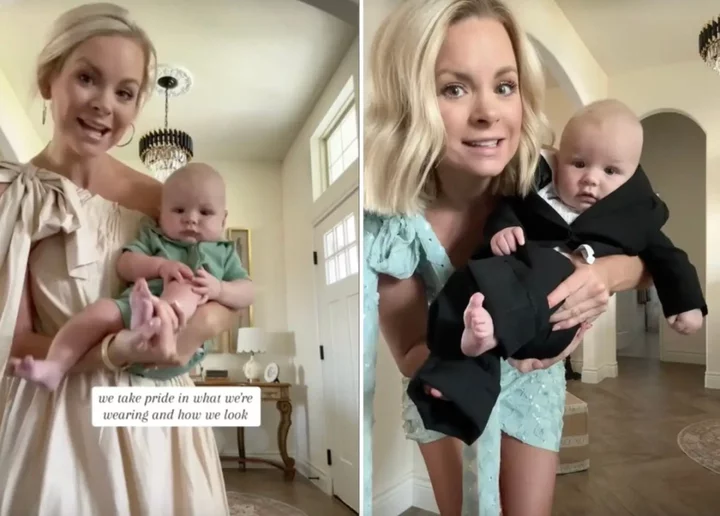
Mom says she was shamed for teaching infant son to take pride in his appearance
A mother has revealed was shamed for dressing her five-month-old son every morning, in order to teach him how to take pride in his appearance. On 27 July, Geordian Abel - a 29-year-old fashion influencer and boutique owner from Fort Worth, Texas - received “brutal” backlash after her TikTok explaining that she dresses her son, Hutton, every day went viral. In the video, Abel was seen in a tan maxi dress adorned with a bow, while her son was dressed in a green polo onesie. She told viewers: “I think it’s important to instill in him from a young age that we get up, we get dressed, we take pride in what we’re wearing and how we look.” She captioned the video: “Teach ‘em young.” In an interview with Insider, the Flourish In Frills owner said that she made the TikTok video after receiving many comments on her “outfit of the day” (OOTD) videos, as viewers questioned why she and her son get “dressed to the nines” every day. The video has since received more than two million views and an onslaught of negative comments on the platform, which Abel later described as “brutal” in a follow-up video. “I too wear a one shoulder cocktail dress on a Monday morning,” one user snarked, while someone else wrote: “The greatest gift you can give him is to teach him not to care what other people think.” @geordianabel Teach em young ? #momlife #babyboy #4monthsold ♬ original sound - Geordian TikToker @bugsbryant added to the discourse when she stitched Abel’s video with her own TikTok, which quickly went viral with 2.3m views. “We are in the same clothes we slept in,” she replied to Abel’s post. “It is currently 3pm, and we will stay in this attire until tomorrow or until I decide to do the mountain of laundry that’s upstairs.” In a follow-up video, Abel told viewers that while she’s decided to take the criticism with a grain of salt, the “mom-shaming’s gotta stop.” She doubled down on dressing her son Hutton every day in a 29 August video, where she shared that the routine could “set him up for success for job interviews” or help counteract depression in the future. @bugsbryant #stitch with @Geordian ♬ original sound - BugsBryant Viewers in the comment section agreed with Abel, writing: “Exactly!!! I hate that people were mom shaming you about this.” Another person commented: “There’s so many benefits to changing out of PJs in the morning.” Speaking to Insider, Abel admitted that she didn’t expect her video “would get such negative reaction,” as she’s “never known any different than getting up and getting dressed.” However, she’s decided to turn the other cheek and has since been posting videos on TikTok that poke fun at the backlash. @geordianabel To each their own, but it's important to us ? #momlife #momsoftiktok #newmom ♬ be Love Is Beautifully Painful (Remix) - Ghost Duet In a video from 25 August, the boutique owner jokingly dressed up her baby boy in a tiny tuxedo, while other videos showed Abel dressed in a fancy gown as she tackled household chores. She hasn’t let the online negativity change the way she gets her son ready for the day, telling Insider that she’s a proponent of dressing with panache and flair. “I am super passionate about look good, feel good,” Abel said. The mom of one added that her positive attitude was instilled by her own mother from a young age. Plus, a boutique owner, she lives and breathes clothes and wouldn’t have it any other way. “I probably love clothes a tad more than the next girl,” she explained. “But even getting up and putting on athleisure, if that’s their jam, does a world of difference.” The Independent has reached out to Geordian Abel for comment. Read More Ruby Franke – update: TikTokers crash virtual court hearing before YouTube influencer held in jail Single woman’s day in a life video met with vitriol after going viral Rihanna and A$AP Rocky’s unusual new baby name has been revealed Schoolboy almost dies from swallowing magnets for TikTok challenge Woman shares honest review of New York City apartment TikTok mom slammed after making 5-year-old son run in 104 degree heat
2023-09-12 04:51
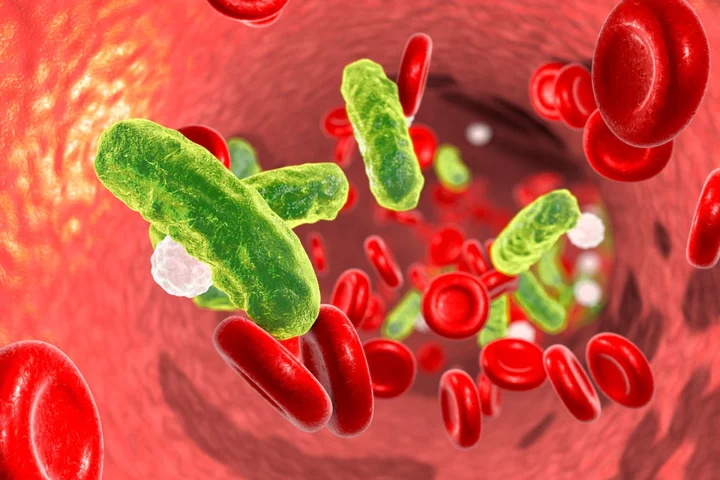
World Sepsis Day: What is the condition and its symptoms?
Sepsis is an illness that affects nearly 50 million people worldwide each year, with around 11 million deaths attributed to the condition. In the United States, at least 1.7 million adults in the US develop sepsis annually, and nearly 270,000 die as a result, the Centres for Disease Control and Prevention (CDC) says. It affects 245,000 people in the UK each year, with around 48,000 deaths, according to the UK Sepsis Trust. World Sepsis Day commemorated on 13th September every year, strives to raise global awareness of the life-threatening condition. The day is seen as “an opportunity for people worldwide to unite in the fight against sepsis,” the Global Sepsis Alliance says. Here is everything you need to know about sepsis: What is sepsis? Sepsis Research says when the condition strikes, the immune system “overreacts” and begins to attack the infection and everything else around it “including the body’s own tissues and organs.” “Any type of infection — bacterial, viral or fungal — can lead to sepsis,” it adds. When sepsis occurs, it can cause inflammation and cause blood clotting around the body, if it does not get treated, it can result in death, organ failure and tissue damage, CDC says. Sepsis cannot be caught from another person, the NHS explains. What are the symptoms? The World Health Organisation (WHO) explains that the condition is a “medical emergency,” so if you think a person is exhibiting signs of sepsis or if you are showing signs – make sure you call 999 or go to the emergency room immediately. According to WHO, common signs and symptoms include: • Fever or low temperature and shivering • Confusion • Difficulty breathing • Clammy or sweaty skin • Extreme body pain or discomfort • High heart rate, weak pulse or low blood pressure • Low urine output Symptoms in children include: • Fast breathing • Convulsions • Pale skin • Lethargy • Difficulty waking up • Feeling cold to touch What are the causes? The Mayo Clinic says any type of infection can lead to sepsis and those that more commonly cause the condition include infections of: • Lungs, such as pneumonia • Kidney, bladder and other parts of the urinary system • Digestive system • Bloodstream • Catheter sites • Wounds or burns “Sepsis often presents as the clinical deterioration of common and preventable infections such as those of the respiratory, gastrointestinal and urinary tract, or of wounds and skin. Sepsis is frequently under-diagnosed at an early stage - when it still is potentially reversible,” the Global Sepsis Alliance says. Who is most at risk? The people most at risk of the condition, according to Mayo Clinic, are: • People with lower immune response, such as those being treated for cancer • People with human immunodeficiency virus (HIV). • People with chronic diseases such as diabetes kidney disease or chronic obstructive pulmonary disease (COPD). • people who are in intensive care or longer hospital stays. • People over the age of 65 • Infants How many cases are there globally? The WHO says a scientific publication estimated that in 2017 there were 48.9 million cases and 11 million sepsis-related deaths worldwide, which accounted for almost 20 per cent of all global deaths. That same year, almost half of all global sepsis cases occurred among children with an estimated 20 million cases and 2.9 million global deaths in children under 5 years of age. How can it be prevented? The Global Sepsis Alliance says the best to to avoid sepsis is by preventing infection. This can be done by undergoing vaccinations, ensuring that you only come into contact with clean water, washing your hands properly and if you are giving birth - making sure it is in a clean and sterilised environment. Can sepsis be treated? Sepsis can be treated with appropriate treatment such as antibiotics – this should be given as soon as possible. The CDC says sometimes “surgery is required to remove tissue damaged by the infection”. “Antibiotics are critical tools for treating life-threatening infections, like those that can lead to sepsis,” the CDC adds. Read More 5 things everyone needs to know about eczema 13 potential cancer symptoms you should get checked out How can I improve my teenager’s low mood? Duran Duran’s Andy Taylor says he’s ‘asymptomatic’ after end-of-life diagnosis Nine hours of parallel surgery: how Britain’s first womb transplant was carried out Bursts of activity that make you huff and puff ‘linked to reduced cancer risk’
2023-09-12 03:21
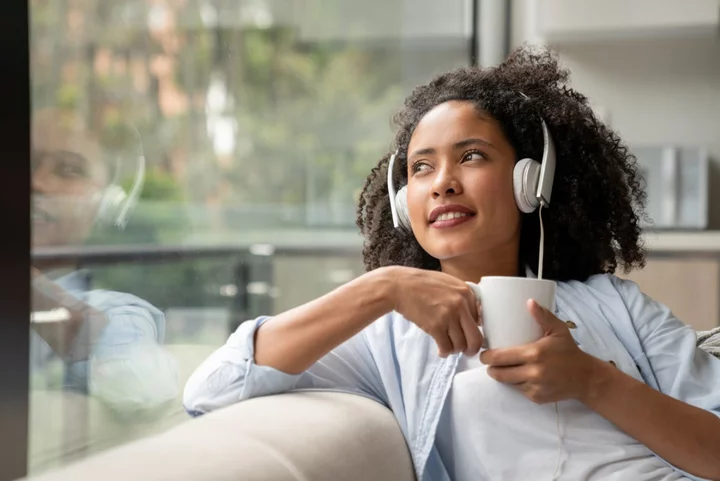
Scientists reveal everyday pleasures that elevate brain performance
Have you got a favourite track? Well, it’s time to turn it up and enjoy the beat with a warm cup of coffee. Everyday pleasures like listening to music or sipping a cup of coffee can elevate brain activity, improving cognitive performance including in tasks demanding concentration and memory, according to a recent study. A group of researchers looked at a new NYU Tandon School of Engineering study involving MindWatch a brain-monitoring technology. MindWatch is an algorithm that analyses a person’s brain activity from data which is collected from a wearable device which can monitor electrodermal activity (EDA). EDA is a measure of electrical changes in the skin triggered by emotional stress, often associated with sweat responses. In the study, published in Nature Scientific Reports, participants were made to wear these skin-monitoring wristbands as well as brain-monitoring headbands to complete a range of cognitive tests. The tests were conducted while the participants listened to music, drank their coffee and smelled perfumes reflecting their individual preferences. These tests were completed again without any of those stimulants. Researchers found that both music and coffee significantly influenced participants’ brain arousal, and put them in a “state of mind” that could “modulate their performance in the working memory tasks they were performing,” the NYU press release says. The wearable device found that the stimulates specifically triggered increased “beta band” brain wave activity which is linked to peak cognitive performance. Perfumes also had a slight positive effect, suggesting to researchers that there is a need for further investigation. “The pandemic has impacted the mental well-being of many people across the globe and now more than ever, there is a need to seamlessly monitor the negative impact of everyday stressors on one’s cognitive function,” says Rose Faghih, an associate professor of biomedical engineering who developed MindWatch in six years. “Right now MindWatch is still under development, but our eventual goal is that it will contribute to technology that could allow any person to monitor his or her own brain cognitive arousal in real-time, detecting moments of acute stress or cognitive disengagement, for example. “At those times, MindWatch could ‘nudge’ a person towards simple and safe interventions — perhaps listening to music — so they could get themselves into a brain state in which they feel better and perform job or school tasks more successfully, professor Faghih added. The specific tests used in this study involved a working memory task, called the n-back test which involves presenting a sequence of stimuli to the participants, in this case, images or sounds. It was shown one by one, and people were asked to indicate whether the current stimulus matched the one presented "n" items back in the sequence. This study employed a 1-back test — the participant responded "yes" when the current stimulus is the same as the one presented one item back — and a more challenging 3-back test, asking the same for three items back. Three types of music were also tested out, there was energetic and relaxing music familiar to the participants, as well as novel AI-generated music that reflected the subject’s tastes. Results showed that familiar, energetic music led to the best performance, followed by AI-generated music tailored to the participant’s taste. Coffee and perfume had lesser but still noticeable positive impacts. The MindWatch team wish to conduct further experiments to confirm the tool’s reliability and understand the broader effectiveness of various interventions on brain activity. Researchers have noted that while specific interventions might generally boost brain performance, individual results may vary. The study is published in the journal Nature. Read More ‘The Puss in Boots Effect:’ Women use infant-directed speech when addressing dogs with larger eyes Study reveals one thing to focus on if you want to live to 100 Extreme heat may speed up cognitive decline for people from poorer neighbourhoods Quick, moist and flavourful: Jurgen Krauss’s marble cake Mother whose hot flushes led to leukaemia diagnosis says ‘don’t ignore’ symptoms What happens at a sexual health check-up?
2023-09-11 23:49
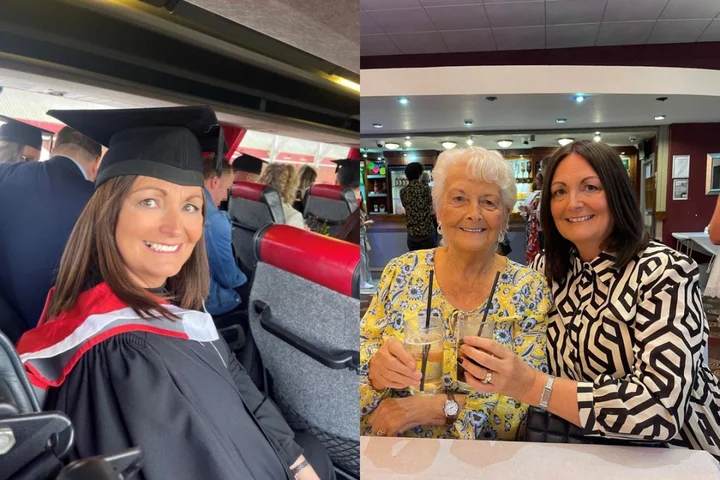
Mother says ‘don’t ignore’ symptoms after persistent hot flushes led to leukaemia diagnosis
A mother who felt she was being “eaten away” after hot flushes led to an incurable blood cancer diagnosis in her late 50s has urged women not to ignore symptoms. In the summer of 2022, Barbara Geraghty-Whitehead, 58, a school inclusion manager who lives in Cheshire, began to experience hot flushes, dizziness and she developed an ear infection. She said she “put it to the back of (her) mind”, but her symptoms persisted – and eventually, after months of hesitation, she visited her GP in September 2022 and underwent blood tests. Within a matter of hours, she received a phone call from her doctor, saying that they were concerned about how high her white blood cells were and that they suspected it could be cancer. One week later, after further tests, Geraghty-Whitehead was told she has chronic myeloid leukaemia (CML) and it is incurable. “You say you want to carry on as much as normal, but from that second nothing else was going to be normal anymore,” she told PA Real Life. “I wanted to go in and for them to say, ‘No, it was a mistake, it’s something else,’ but they didn’t, they said it was CML.” Geraghty-Whitehead started taking chemotherapy tablets that same day – and despite experiencing side effects of fatigue, nausea, acid reflux, and a loss of taste, nearly one year later she has responded well to treatment and has been able to see her daughter get married in Cyprus. After nearly ignoring her own symptoms, she wants to encourage others not to “make excuses”, as “people need to know the signs so they can get diagnosed early”. “When I was first diagnosed, you don’t know where to start and that in itself is overwhelming, but the support I’ve received has been fantastic,” Geraghty-Whitehead said. “I think about [my diagnosis] every day and it is hard and I do get upset, but now I’ve just got to face the fact that this is the new me. “I’m never going to be the person that I was before but I’m going to recreate the new me.” Geraghty-Whitehead said she almost ignored her cancer symptoms and attributed her hot flushes to warm weather and “thought no more of it”. She said she did not think it was related to menopause, as she had already been taking hormone replacement therapy (HRT) patches for years to treat her bone pain. “I started not feeling right and I couldn’t figure out what it was, but I didn’t do anything about it – I just left it,” she explained. She added: “I never ever got hot flushes. Even though I was put on HRT patches, it was mainly for my bone pain, so I just put it to the back of my mind and I thought no more of it.” Looking back now, she realises she should have acted sooner – but on September 16, she visited her GP and underwent blood tests. Days later, on the day of the Queen’s funeral, she found herself sat in an empty hospital waiting room, preparing for further blood tests – and by the end of that week, on September 23, Geraghty-Whitehead received the news she has CML and the following minutes felt like “a blur”. “Everything happened so fast, it was just like a roller-coaster,” she said. “I think it was worse waiting for the blood test results because I didn’t know what type of cancer it was, whether I was going to live, whether I was going to die. “But all I wanted was to get the very first tablet into my body, as I felt like I was being eaten away because it was in my blood and your blood travels everywhere.” Geraghty-Whitehead started treatment the same day she was diagnosed, which she said was the “first positive move”. Although she was told her CML is incurable, doctors reassured her other patients had responded well to the chemotherapy tablets she needed to take daily, and this gave her hope. For more information and support, visit Leukaemia Care’s website here: leukaemiacare.org.uk Read More 9 arthritis myths we all need to stop believing What happens at a sexual health check-up? 9 key signs of leukaemia, as awareness is called ‘non-existent’ Cancer-hit dad who planned own funeral outlives three-week prognosis What happens at a sexual health check-up? 9 arthritis myths we all need to stop believing
2023-09-11 18:23
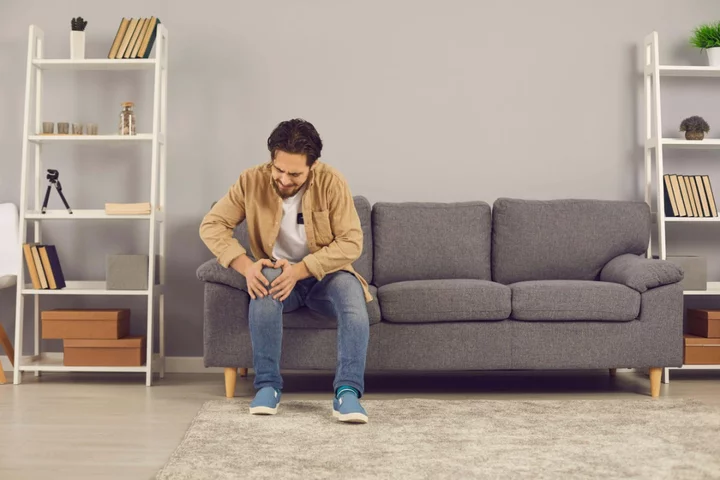
9 arthritis myths we all need to stop believing
Many people assume arthritis is just an ‘old person’s’ disease, and an inevitable part of getting older. Try telling that to the parents of toddlers impacted by the condition, or the 20-somethings living with it. The suggestion that it only troubles the elderly is one of many myths associated with arthritis, which affects around 10 million people in the UK. “One in six people live with the pain, fatigue, and disability arthritis can cause. The impact can be huge, affecting the ability to work, care for family, move free from pain and live independently,” says Deborah Alsina, chief executive at the arthritis support charity Versus Arthritis, speaking to mark Rheumatoid Arthritis Awareness Week (September 11–17). “There are many misconceptions when it comes to understanding arthritis, but by shining a light on the reality of living with arthritis day in, day out, we can help grow understanding and inspire people to take action.” Dr Amara Ezeonyeji, consultant rheumatologist from The Lister Hospital in London (part of HCA Healthcare UK), adds: “Arthritis is a general term that refers to a group of over 100 different types of inflammatory joint diseases that affect the musculoskeletal system. The most common symptom of arthritis is joint pain, but it can also cause stiffness, swelling, and decreased joint mobility.” She says the most common form of arthritis is osteoarthritis (OA), often associated with wear and tear of the joints. Other common types are rheumatoid arthritis (RA), an autoimmune disease that primarily affects the joints; psoriatic arthritis, a type of arthritis associated with the skin condition psoriasis; ankylosing spondylitis which primarily affects the spine and can lead to fusion of the vertebrae; and gout, which is caused by the accumulation of uric acid crystals in the joints and often affects the big toe. “There are several myths about arthritis that are often repeated. It’s important to dispel these to promote an accurate understanding of arthritis, and to encourage those affected to seek appropriate medical care and support from a rheumatologist,” Ezeonyeji adds. Here, Alsina and Ezeonyeji debunk nine common arthritis myths… Myth 1: Arthritis only affects the elderly While it is more common in older adults, arthritis can affect people of all ages, including children and young adults. Myth 2: Cracking your knuckles causes arthritisPeople who crack their knuckles will sometimes be wrongly warned that it’ll bring on arthritis, but Ezeonyeji explains: “There’s no scientific evidence linking knuckle cracking to the development of arthritis. When people crack their knuckles, they experience a release of pressure in the joints and relaxation in the surrounding muscles. It can make the joint feel more mobile and is unlikely to cause arthritis or other problems.” Myth 3: It’s just wear and tearAlsina says one of the most damaging myths is that any form of arthritis is just ‘wear and tear’. “Osteoarthritis is the most common type of arthritis and will affect half of us by age 70. But it isn’t an inevitable part of ageing – your joints are not like car tyres destined to wear down and be replaced. They are made of complex living tissue that our bodies constantly repair and maintain, and osteoarthritis occurs when our bodies can no longer do this effectively,” she says. “Our joints get stronger the more we use them, so keeping physically active and maintaining a healthy weight can help keep osteoarthritis under control.” Myth 4: Cold damp weather causes arthritisAlthough cold and damp weather can sometimes make arthritic joints feel worse, it’s definitely not why arthritis starts. Ezeonyeji explains: “Weather can influence joint discomfort, but it doesn’t cause arthritis. Arthritis is primarily a result of genetic and environmental factors.” Myth 5: Exercise makes arthritis worse People with arthritis can often find it hard to maintain regular physical activity, but a lack of movement can actually increase symptoms such as stiffness and pain, warns Alsina. “Building activity into your daily routine can help improve this, because using your joints builds muscle strength and improves the blood supply, all of which can ease symptoms and keep joints in better shape for longer.” She says different activities will suit different people, but adds: “Swimming and cycling are great exercises to try, as they get the body moving without putting pressure on painful joints.” It’s always a good idea to seek advice from a healthcare specialist if you are unsure what types of exercise will be suitable for you. Myth 6: Arthritis is just joint pain – it’s not serious Ezeonyeji says that while arthritis can be debilitating and lead to a reduced quality of life, it can get even more serious than that for some people. “Rheumatoid arthritis, for instance, is an autoimmune disease that can affect various organs and tissues in addition to joints,” she points out. Myth 7: There’s no treatment for arthritis While there’s no cure for arthritis, Ezeonyeji says there are many effective treatments for managing the disease, including pain relief medication, physiotherapy, disease modifying agents and biological drugs for inflammatory arthritis, plus joint surgery in some cases. “It’s also recommended that people with arthritis modify their lifestyle and try to lose weight [if they need to], follow a healthy balanced diet, exercise regularly and stop smoking,” she adds. Myth 8: Miracle cures can make arthritis disappear Although some people with arthritis believe copper or magnetic bracelets ease symptoms, Alsina says studies show no evidence to support this. “It’s the same with lots of supplements, and some of these are really pricey,” she observes. “Interestingly though, placebos can be very effective and continue to work even if you know it’s a placebo, so if you find these helpful there’s no reason to stop.” Myth 9: Certain foods definitely help/hinder arthritisThere are claims that foods like tomatoes can cause arthritis flares, and other foodstuff like cider vinegar may help it. Alsina says: “Sadly there’s no good evidence that there are specific foods you should avoid or have more of. But if you do find things that are helpful or make your symptoms worse, then listen to your body.” Read More Charity boss speaks out over ‘traumatic’ encounter with royal aide Ukraine war’s heaviest fight rages in east - follow live Prince Harry spotted at Windsor Castle on anniversary of Queen’s death How the weather can change the way you dream All the times Kate has channelled the late Queen’s style since her death
2023-09-11 15:15
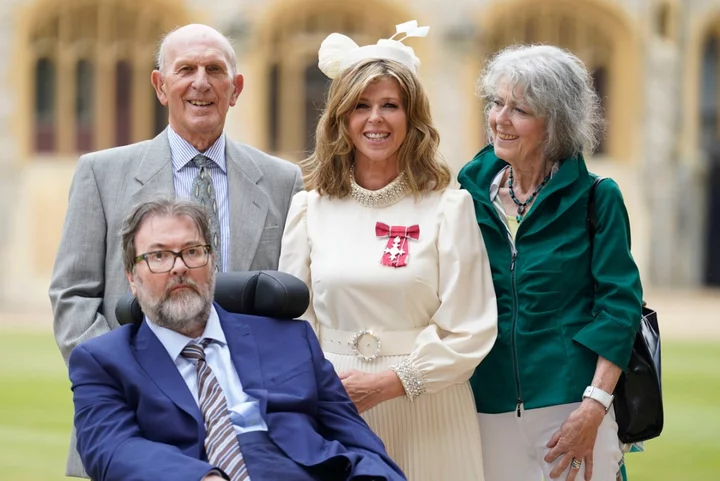
‘I think sickness is selfish’: Kate Garraway opens up about realities of caring for husband Derek Draper
Kate Garraway has opened up about the realities of caring for her husband, Derek Draper, in a new interview. A former lobbyist, Draper, 55, was left with long-lasting organ damage after falling seriously ill with Covid-19 in March 2020. After spending more than a year in hospital with Covid from March 2020 to April 2021, partly in an induced coma, he has been in and out of hospital since then for various treatments, including in October 2022 after he contracted sepsis. Now, speaking to The Sunday Times, Garraway, 53, has spoken at length about Draper’s condition, the constant care he requires today, and the toll it takes on her. Currently, Draper has no physical mobility and needs to be held upright by two people five times a day in order to bear any weight. “Being upright is incredible for the brain,” Garraway explained. “We’re meant to be upright – you don’t want your brain to adjust to being flat.” However, a lack of progress has taken a toll on them both. “The truth is he’s terribly, terribly depressed,” the Good Morning Britain presenter added. “I think sickness is selfish,” she continued. “Selfish in the sense that it does strip you of your empathy. He does get very emotional about the strain this has put on me. “But when someone’s body doesn’t work, their brain can’t make anything or anyone else a priority.” Garraway went on to speak about how, as his condition progresses, those around her have become increasingly concerned. “My friends worry that I can’t spend my life forever attached to whether Derek is having a good or bad day, for my own sanity,” she said. “So I’ve got to create a bit of headspace. But we’ve never had a period where we could say, ‘Well, at least he’s safe now.’” The interview comes after Garraway was made a Member of the Order of the British Empire (MBE) by the Prince of Wales at Windsor Castle in June. The presenter was recognised in the 2022 New Year Honours for her services to broadcasting, journalism, and charity. Draper was able to attend the investiture ceremony in his wheelchair, wearing a blue suit and stripe tie. Garraway wore a cream dress with a bejewelled collar and a matching headpiece. When it was announced that she had been awarded the accolade, Garraway said on GMB: “I actually feel very awkward about it all really, I don’t know why, because I’m thrilled to bits and incredibly honoured. “But you just sort of think, ‘What? Me?’, and then you think it’s not real.” Read More Kate Garraway’s husband Derek Draper admitted to hospital after MBE ceremony Derek Draper watches as wife Kate Garraway collects MBE from Prince William Susanna Reid shares message on GMB for Kate Garraway and Derek Draper after Elton John tribute Father praised for ‘embarrassing’ dance when picking daughter up from high school What are Blue Zones and how do they impact your health? Hairspray star reveals she went into labour while attending Beyoncé concert
2023-09-10 17:53

Father praised for performing ‘embarrassing’ dance moves when picking daughter up from high school
A father has been praised for the “embarrassing” dance moves he’s performed when picking his daughter up from high school. Jevin Smith shared a video to TikTok last month of some of the “most embarrassing parent pick ups” he’s done at his daughter’s school. Smith’s video started off with him wearing a gold jacket and black pants, while he danced to MC Hammer’s “2 Legit 2 Quit.” While continuing some of his moves, he started making his way towards his daughter, Jayna, who had her head down, seemingly due to her embarrassment over her father’s arrival. As she continued to walk next to her father while they headed towards his car, Smith danced in front of her. He also continued dancing as he walked towards the driver’s seat of the car. Although the next clip of the montage began in a similar fashion, it had a different musical theme, as the text read: “How I would have picked up my daughter in the 80s.” Jayna was seen laughing and shaking her head, as her father was wearing a curly wig with a sweatband over it, a striped tank top, tan shorts, and socks that went up to his knees. The video continued with Smith dancing to “I Feel For You’” by Chaka Khan, before he opened his car door for his daughter. In the background, some of the other students at Jayna’s school were seen laughing and cheering Smith on. Smith’s third video in the montage showed him wearing a curly wig, hat, black sweatshirt, and matching jeans, before making his way towards his daughter, who was was exiting her school. While Jayna was laughing and had her head down, Smith went on to rap along to Ice Cube’s “It Was a Good Day”. He also poked fun at the song’s title in the text on the video, writing: “Today was a good day for me, but was it for my daughter?” As he continued his singing and dancing, he put his arm over his daughter’s shoulder, before taking her school bag from her. He then opened the backseat door of his car for her, while she still appeared embarrassed by her father’s dancing. Smith’s video has quickly gone viral on TikTok, where it has amassed more than four million views. In the comments, many people went on to applaud the father for his dance moves, and made jokes about how he could have entertained some of the other students at the school. @wealthyjev Here’s a #throwback of some of my most #embarrassing #DaddyDaughterPickUp s ??? I know my daughter @Reigny cant wait yo graduate ??♂️ Which #parentpickup was your favorite? ? #throwbackthursday ♬ original sound - Wealthy Jev “I absolutely love that you open the door for her! Great dad!!” one wrote. “This man better have his own page in the yearbook,” another quipped, while a third added: “If I was a teacher at that school, I would be RUNNING after the bell rings to watch this in person.” Speaking to Today, Jayna, who’s a senior in high school, noted that while she was initially embarrassed by her father’s dances, she now finds them to be quite amusing. “In the beginning, when he first started doing it, I was like, this is unbearable. Imagine watching your father get out of the car and start dancing,” Jayna said. “Now I think it’s hilarious. There’s never a time when I’m upset. He’s like a celebrity at school now. Everyone loves his TikTok.” Smith also noted to the publication that, while he started doing these dances for Jayna during her sophomore year, he doesn’t do them all the time. The father, who picks his daughter up from school everyday, acknowledged that he can tell by her face when she’s had a bad day. During those instances, he’ll “either tone down the dance, or get right back in the car,” as reported by Today. He added that he also only does the dances once a month, and doesn’t tell her daughter when it’s going to happen. The Independent has contacted Smith for comment. Read More Lily Allen celebrates third wedding anniversary with David Harbour in sweet Instagram post Elon Musk reveals names of his twins with Shivon Zilis Alabama Barker shares sweet note from ‘best dad’ Travis Barker Alabama Barker shares sweet note from ‘best dad’ Travis Barker Gigi Hadid talks about balancing work and co-parenting with Zayn Malik Seal praises his and Heidi Klum’s daughter Leni for making him ‘a better person’
2023-09-09 04:28
